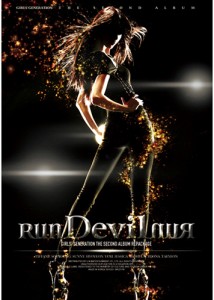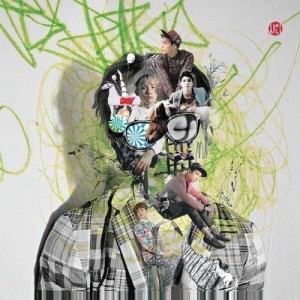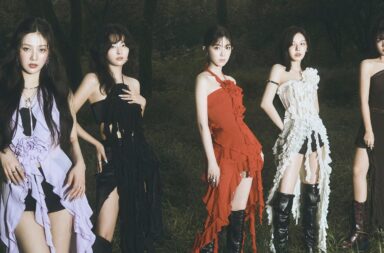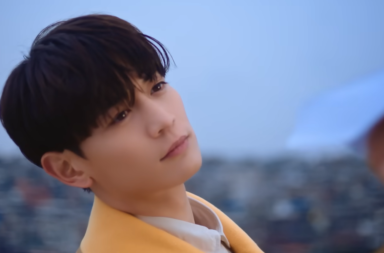 If one thing is certain in the world of K-pop, it’s that packaging is really, really important. The marketing choices that entertainment companies make — from what groups look like to how their songs sound to what they wear to the airport — determine how fans perceive their artists and their relevant promotional activities. This has interesting significance when it comes to the development and production of an album. K-pop albums can come in any shape, any size, and can be filled with so much content that fans aren’t sure if they’re flipping through an album leaflet or a series of full-blown print ads.
If one thing is certain in the world of K-pop, it’s that packaging is really, really important. The marketing choices that entertainment companies make — from what groups look like to how their songs sound to what they wear to the airport — determine how fans perceive their artists and their relevant promotional activities. This has interesting significance when it comes to the development and production of an album. K-pop albums can come in any shape, any size, and can be filled with so much content that fans aren’t sure if they’re flipping through an album leaflet or a series of full-blown print ads.
There’s an interesting conversation to be had about the type, though. Most agencies seem to prefer the standard three species: the mini-album, the full album, and the repackaged album, but recently, we’ve seen groups diverting from the traditional types and instead choosing double albums that are released within months of each other. These two-part albums function differently from what we perceive as a repackage, but each type has a defined place in the industry.
REPACKAGED ALBUMS
We know repackages all too well. Regardless of the agency or artist, the format is clear. Group A releases Album X with Single 1. A few months later, Group A makes a comeback with Album Y with Single 2. How is Album Y different from Album X? It has a different lead single and maybe two to three newly recorded songs, along with the songs from Album X. Oh, with some new pictures too!
I’ve had gripes with many a repackage (see: SHINee’s “Hello”), but I only find them frustrating when management puts little effort into the album’s new material and if the comeback concept doesn’t truly enhance what was originally promoted. In practice, repackages should either serve as a continuation of the theme of the original release or take the group’s concept in a different, but logical, direction. Whichever path the album takes, it should theoretically bridge the gap between itself and the original release — and do so in a way that makes the repackage warranted and meaningful.
VIXX’s new album, Jekyll, appears to be a well thought out repackage in line with this convention — a continuation of the narrative that only a song titled “Hyde” could produce. Even in the teaser for the new single “You’re.Im.Pres.Sive (G.R.8.U),” they give visual homage to their previous single, “Hyde,” and demonstrate that their comeback will transition from darker themes to lighter ones in an seemingly manic way, matching the story of Dr. Jekyll and Mr. Hyde.
And even when repackages don’t necessarily offer a twist to their parent release, they can succeed as a concept if the content isn’t overly superficial. 2PM’s repackage for their recent album, Grown, occurred without much fanfare, but it offered fans the treat of hearing each member perform self-composed solo songs, which ups the “special factor” and value of the album itself.
The question of a repackage always stems back to the base question: “Why should anyone buy this?” Since repackages are such a norm in the industry — and honestly, a smart and easy way to boost revenue — their quality isn’t always the best. In SM Entertainment, repackages have come to be expected for groups when they have a comeback, which makes it strange when management occasionally deviates, as was done with Girls Generation’s noticeable lack of a repackage after “I Got A Boy.”
All in all, followers of K-pop come to accept that the repackage and its single don’t matter very much in the long run, but they serve as something else to consume as a fan. Companies capitalize on this because they know that regardless of what they produce, fans will buy the product, which means that fans are often forced to assign more value to repackages than the company assigns to them during development. If this is truly the trend, repackages need to be either phased out or made severely less common. After all, the energy put into creating the repackage could be channeled into building stronger albums and singles the first time around. Or even better –for companies that only release one single from a group’s album, it would be a great opportunity to promote multiple singles from the original release. Why not showcase more music when excitement for a group is at its peak during comeback season? It’s always a shame when great album b-sides fall by the wayside simply because they weren’t designed to be lead singles, and repackages indirectly bury those songs even more.
DOUBLE ALBUMS

With the general quality decline of repackaged albums, I suppose it’s a good thing then that they aren’t the only option for groups who need to keep their name in the stream of K-pop consciousness at multiple points during the year. Double albums have proven, especially this year, to be a great method for releasing new music. For two-part albums, management cuts a full album into two parts and staggers their release over a period of months. But unlike a repackage, there are no common songs for both albums: each has its own material from the first song to the last.
The double album approach presumably requires more work, as there is typically a larger volume of new material. This translates to more time in the studio and at the drafting table, and even if the two albums make up one composite album, the two parts can have their own discrete identity. This was taken lightly with Lee Hi’s two-part debut album, First Love, which was composed of two mini-albums released in quick secession, and Rainbow’s two-part album, Rainbow Syndrome, which stayed essentially cohesive with catchy pop tunes from start to finish. The idea was more daringly executed with SHINee’s Misconception albums.
SHINee’s third full length album took the double album promotional method to a new extreme by being so concept heavy. The two parts have been treated as two separate entities, simply because they have very different themes and overall moods due to the backstories of each chapter. The first part is full of cheery, bright choruses with a definite electric-funk kick. But the second part is gloomier and darker, all deep tones with somber and sometimes eerie melodies. And, despite the divisive opinions on the two albums, SM Entertainment’s decision to split the group’s third full album in two worked well for SHINee, giving strong evidence that double releases can definitely bring in revenue but receive positive feedback too — if they are well thought out beforehand.
 Double albums have an embedded “special factor” in the current K-pop scene because they aren’t typical, and I would hope that companies time double releases carefully if they want to utilize them with their artists. If entertainment companies can develop well-planned ideas for double releases, I’m all for hearing more of them. Sure, two-part albums boost sales just as much as repackages do, but since there is more new material, one would have higher expectations for the product since the company put in more work when it didn’t necessarily have to. With hope, double releases stay infrequent enough to catch everyone’s eye but common enough that companies are willing to experiment with them and give their artists more promotional opportunities.
Double albums have an embedded “special factor” in the current K-pop scene because they aren’t typical, and I would hope that companies time double releases carefully if they want to utilize them with their artists. If entertainment companies can develop well-planned ideas for double releases, I’m all for hearing more of them. Sure, two-part albums boost sales just as much as repackages do, but since there is more new material, one would have higher expectations for the product since the company put in more work when it didn’t necessarily have to. With hope, double releases stay infrequent enough to catch everyone’s eye but common enough that companies are willing to experiment with them and give their artists more promotional opportunities.
So readers, have any double releases caught your eye? Any repackages that you were really pleased or disappointed with over the years? Would you like to see more artists give double albums a shot?
(DSP Media, Jellyfish Entertainment, JYP Entertainment, SM Entertainment, YG Entertainment, YouTube [1])


